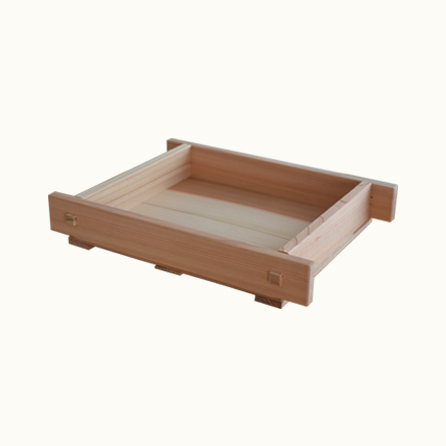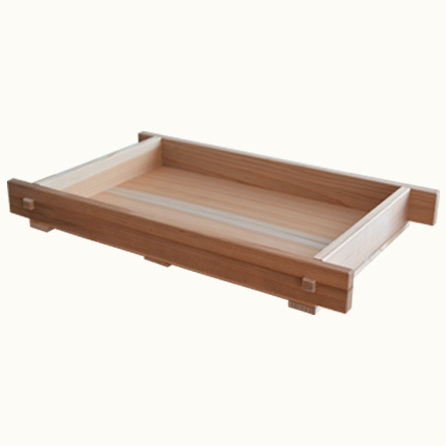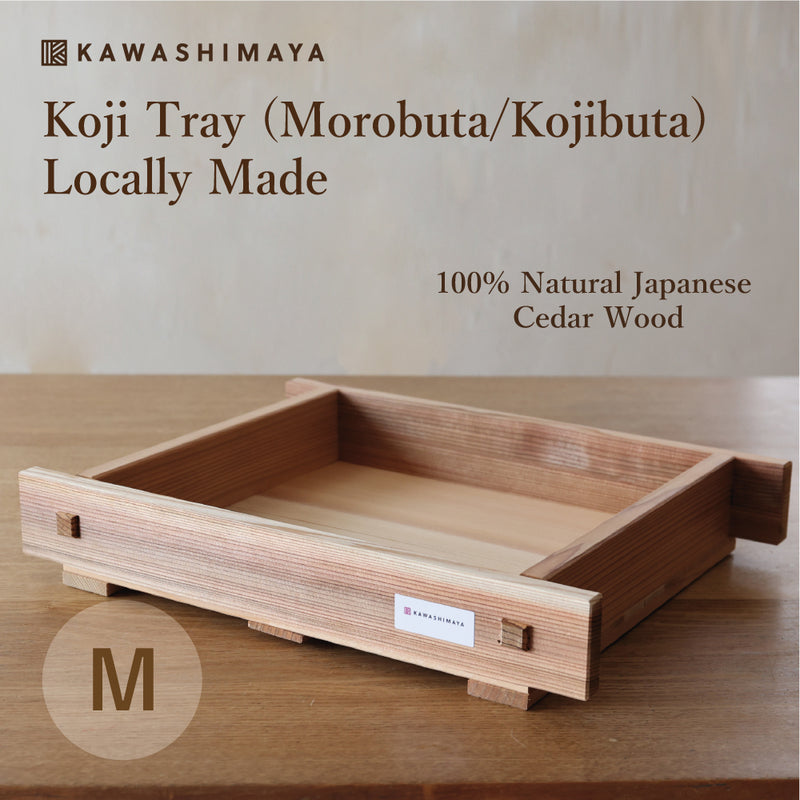
Koji Tray (Morobuta/Kojibuta) Size M - Locally Made, 100% Natural Japanese Cedar Wood
In stock
What is Koji Tray (Morobuta/Kojibuta) Size M?
Koji tray medium size is a professional-style container that is ideal for making koji at home. Called kojibuta or morobuta in Japanese, the koji tray is the proper tool to make koji.
This product itself is limited in the market. Crafted with local natural Japanese cedarwood, this product is constructed by hand, one part after another by skillful craftsmen.
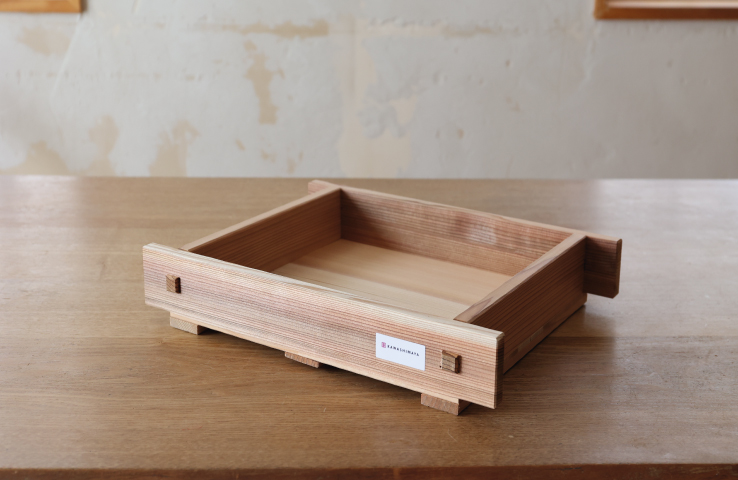
Uses “Nagara Cedar” from Gifu Prefecture
Nagara cedar refers to cedars produced in the Nagara River basin in Gujo District and Takegi District of Gifu Prefecture. The name means “long and good cedar”. Cedar is suitable for koji because it has no natural antibacterial effect like cypress.

One koji tray Can Make Up to 2.5kg of Rice Koji
With this M-size koji tray, you can make up to 2.5kg of koji rice. If you use the household koji fermenter, you can make koji using three lids at once, so you'll be able to produce 7.5kg of koji rice.
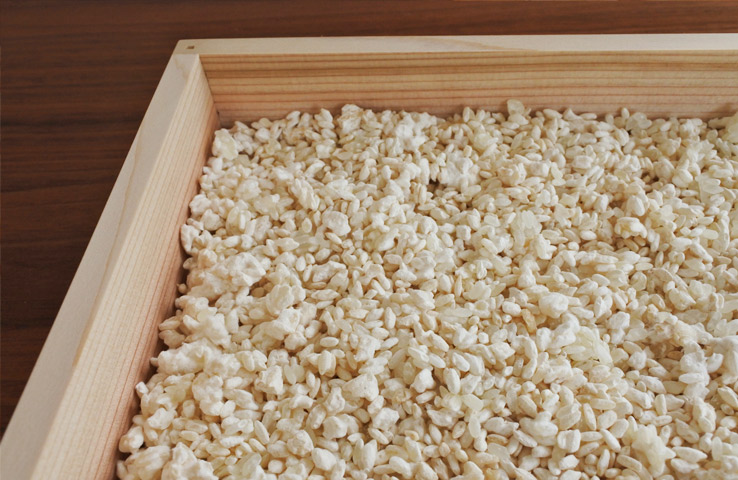
No Preservatives Used
No preservatives are applied to general building materials. You can use it safely.
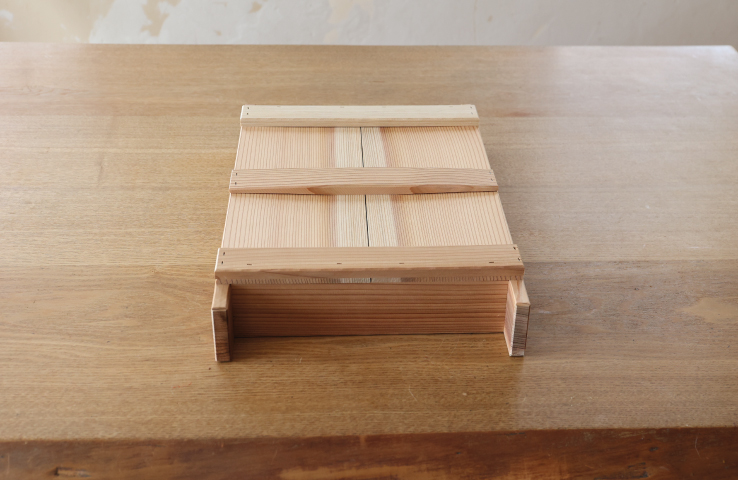
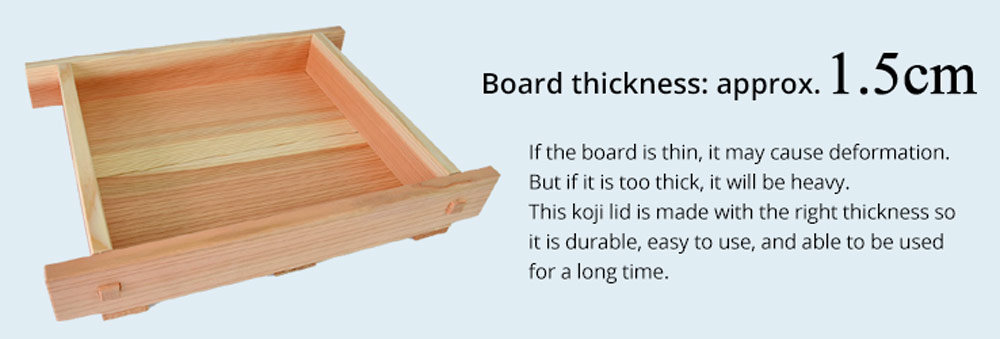
NOW AVAILABLE ON AMAZON USA!
We are pleased to inform you that Koji Tray (Morobuta/Kojibuta) Size M - Locally Made, 100% Natural Japanese Cedar Wood is now available on Amazon USA. Click the link to see the product!
Koji Tray Size M Details
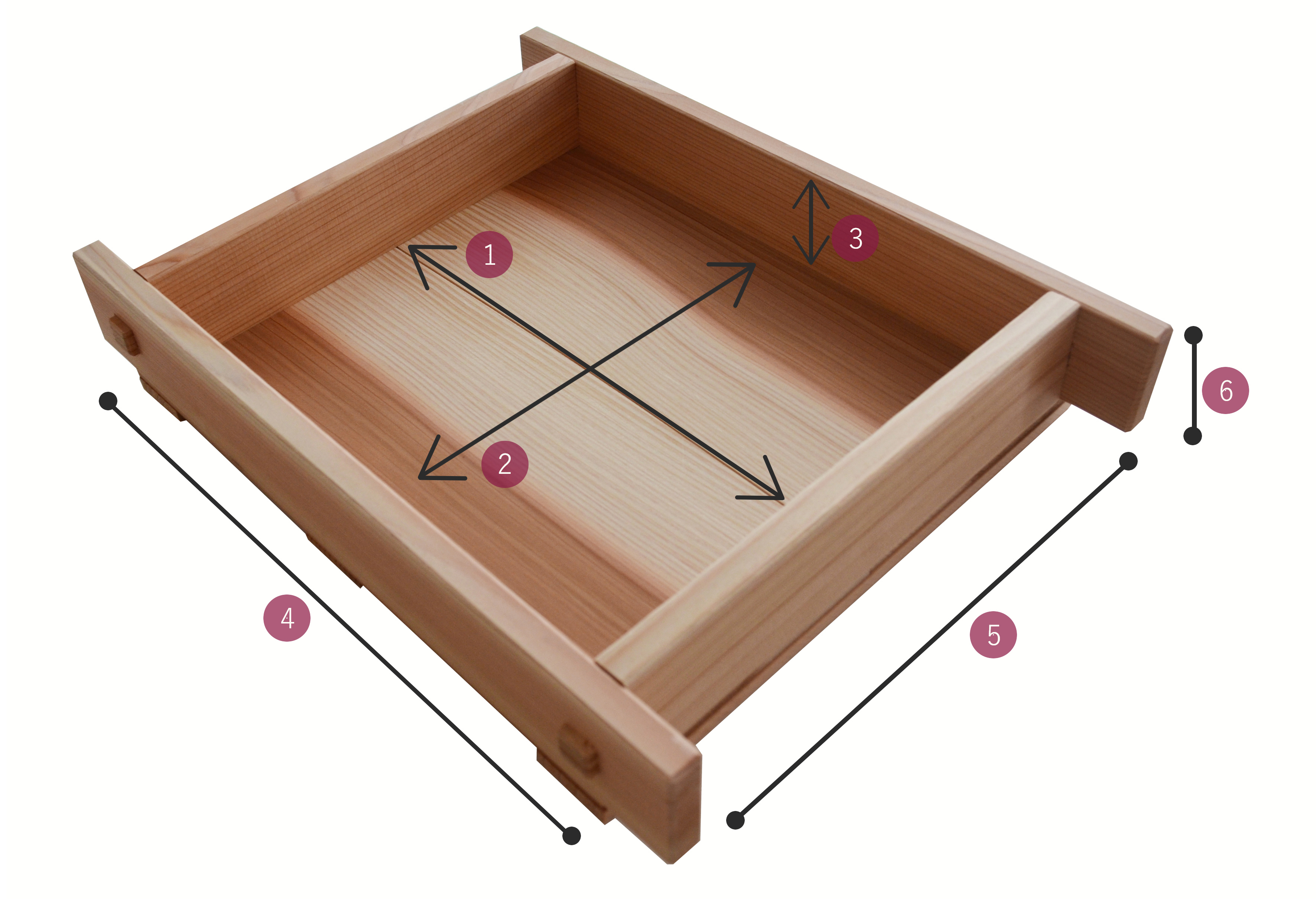
- 1. 30cm
- 2. 27cm
- 3. 5,5 cm
- 4. 40cm
- 5. 31cm
- 6.7 cm
How to Take Care of Koji Tray
● Koji tray is made of wood, therefore do not store in humid places for it can cause mold to grow.
● If you find mold growing on your koji tray, try wiping it off with rubbing alcohol or shochu with high level of alcohol.
● If the mold is already growing too deep, scrape it off.
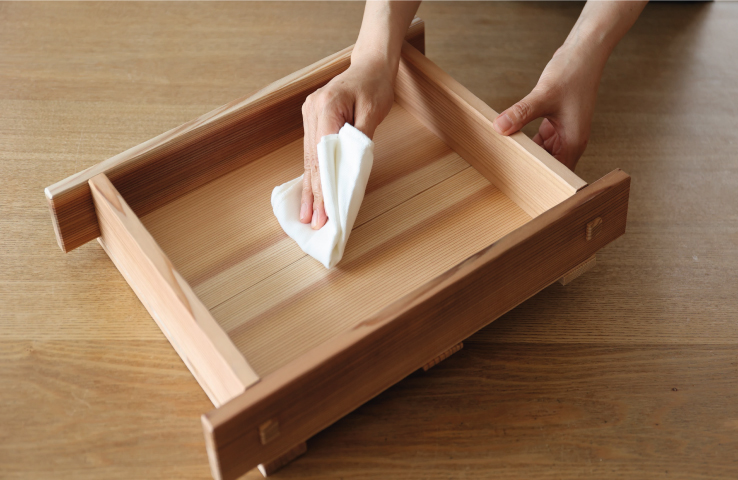
Tips: After each use, hand-wash with water and then wipe thoroughly with clean cloth. Let dry in a well-ventilated room. Do not use detergent and dishwasher for cleaning.
Role of the Koji Tray
Koji tray, commonly known as kojibuta, is a small container that has been used for a long time in koji making (the process of propagating yeast cells on steamed rice).
Koji tray is the suitable tools to make rice koji, brown rice koji, soybean koji, barley koji, etc.
Koji making takes place in a hot and humid specialized room called Kojimuro, which takes 48 to 56 hours. However, due to the nature of the room, various parts like the center and corners, front and back, whether it's close to the ceiling or near the tatami floor, can have different temperatures and humidity.
Therefore, the rice is divided into small portions on this koji tray. The lid placement is regularly moved to adjust the rice condition to be the same in terms of temperature and humidity.
By moving and reloading every 3 hours, lids stacked in the room's corners are moved to the center. The lids in the back are moved to the front, and lids stacked in the upper row are moved to the lower row. By doing this, the yeast cell will be uniformly propagated in the rice koji.
Advantages of koji tray method:
● Compared to machine-made koji (manufactured by automatically controlling the heat generation of koji), the finish of koji is much better. Even in sake breweries, when it comes to sake in junmai or ginjo classification, most of the breweries are made using this lid method. After all, there are some aspects of brewing that are not yet understood by the power of science or machinery.
● The koji finish affects not only sake but also miso and soy sauce. The koji, which is of good quality even after the preparation, works well.
Disadvantages of koji tray method:
● Controlling the temperature. Because temperature control is difficult, it takes more energy and attention.
● A large number of koji tray requires more labor.
How to Make Rice Koji
In this video, we will explain the steps to making Rice Koji (fermentation starter, Aspergillus oryzae, bred on rice). Rice Koji manufacturer generously hands down this guide. Please feel free to use this as a reference when making Rice Koji.
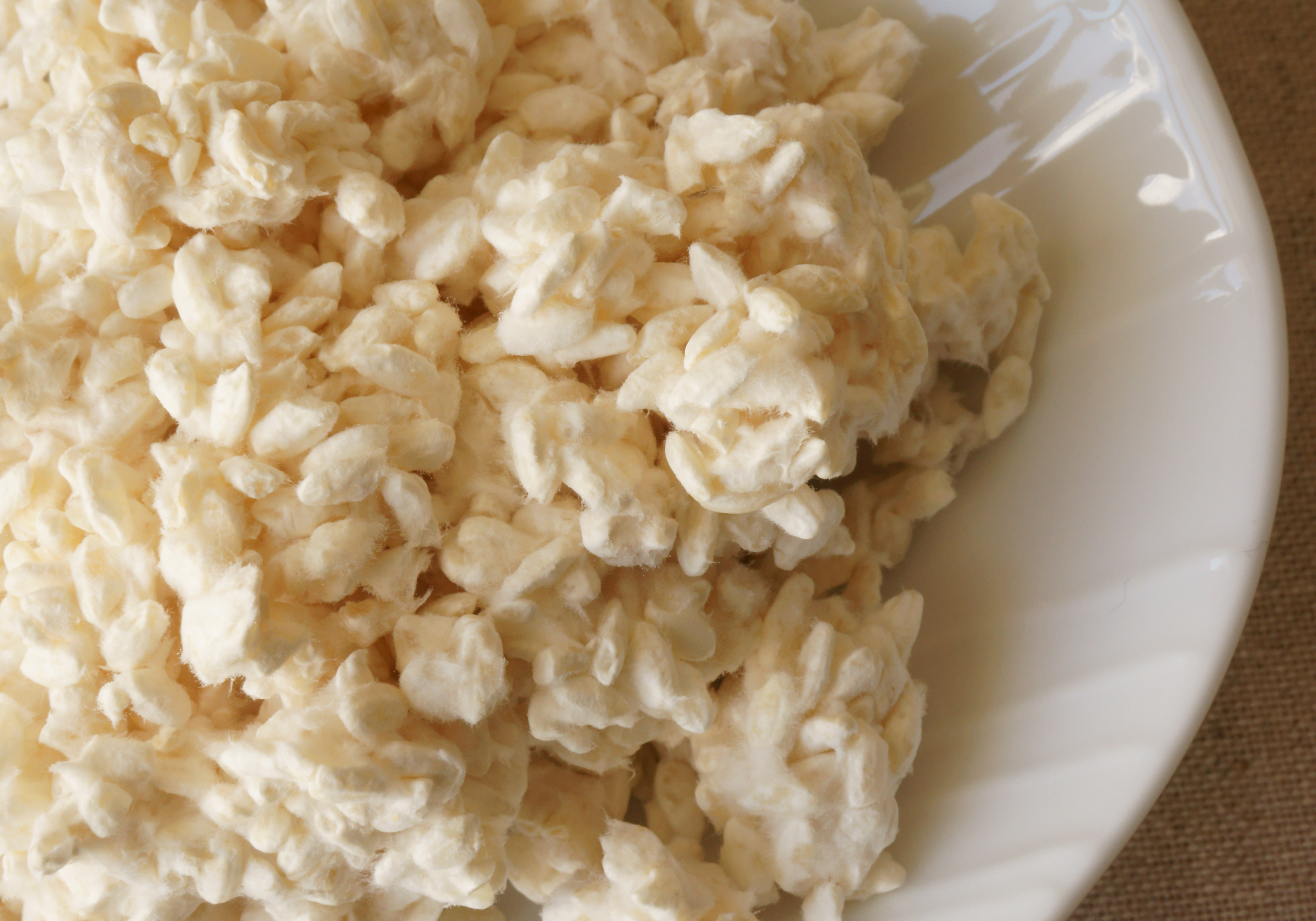
Recipes that uses Rice Koji
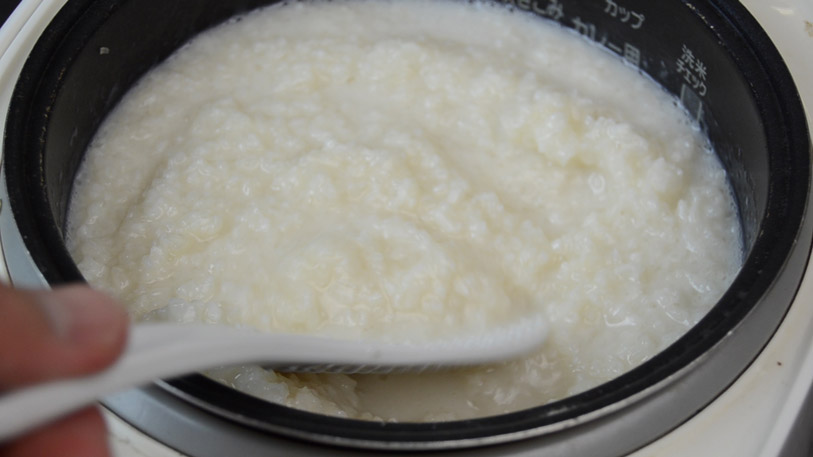

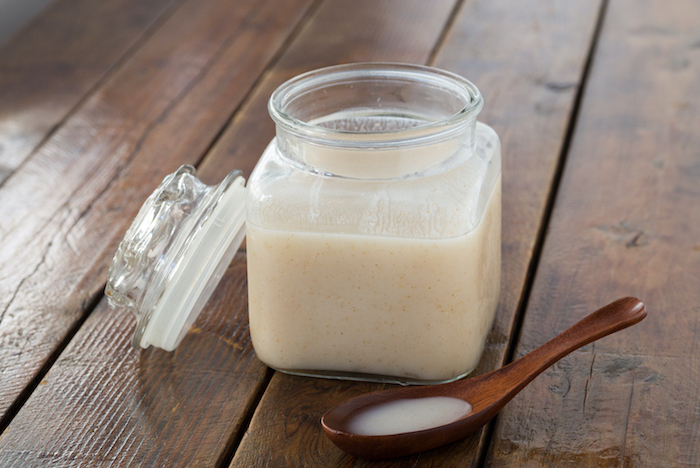
The Amount of Koji Rice And The Amount of Rice to Use
The Amount of Rice
The Amount of Finished Koji Rice (Approximation)
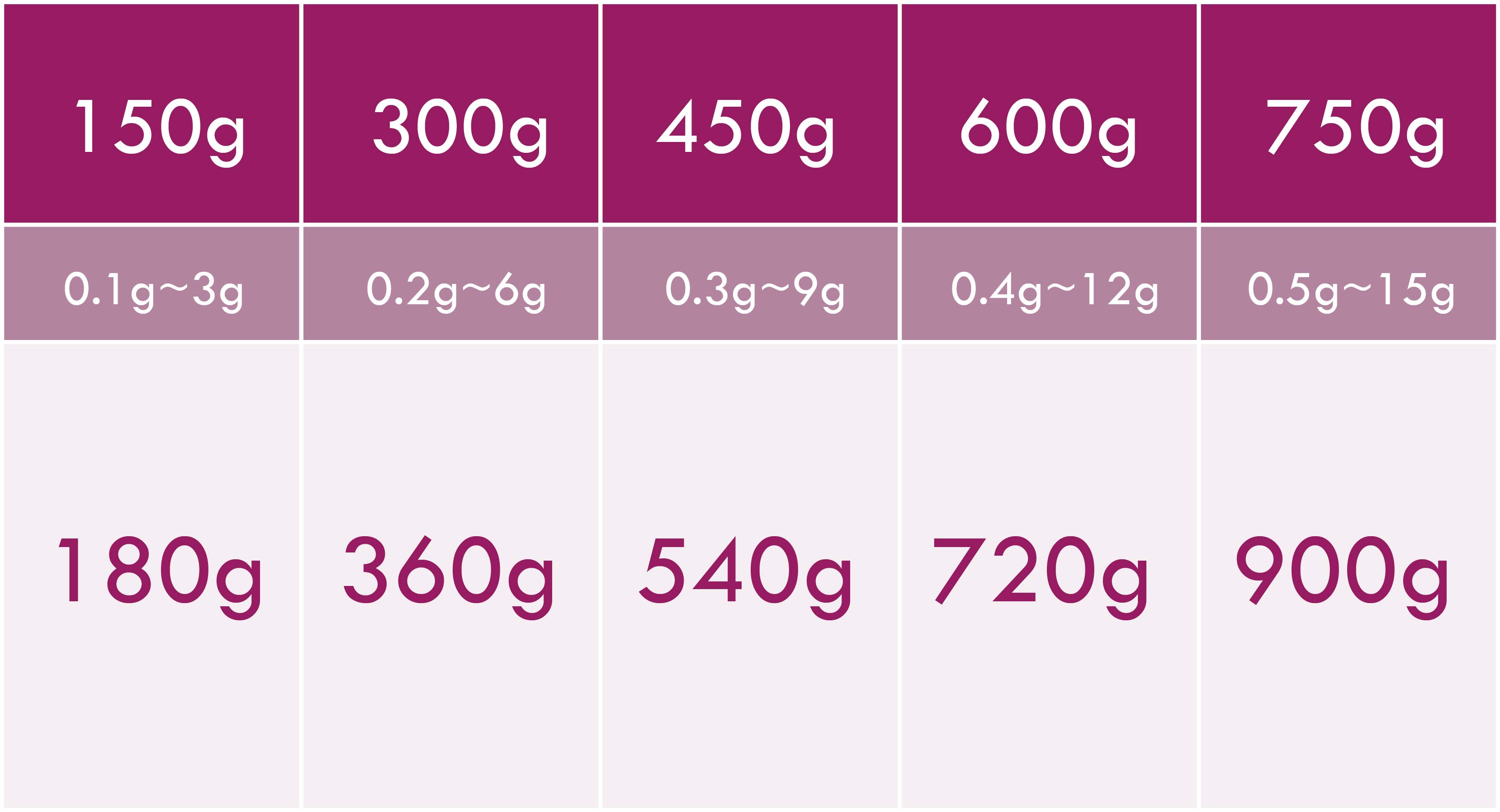
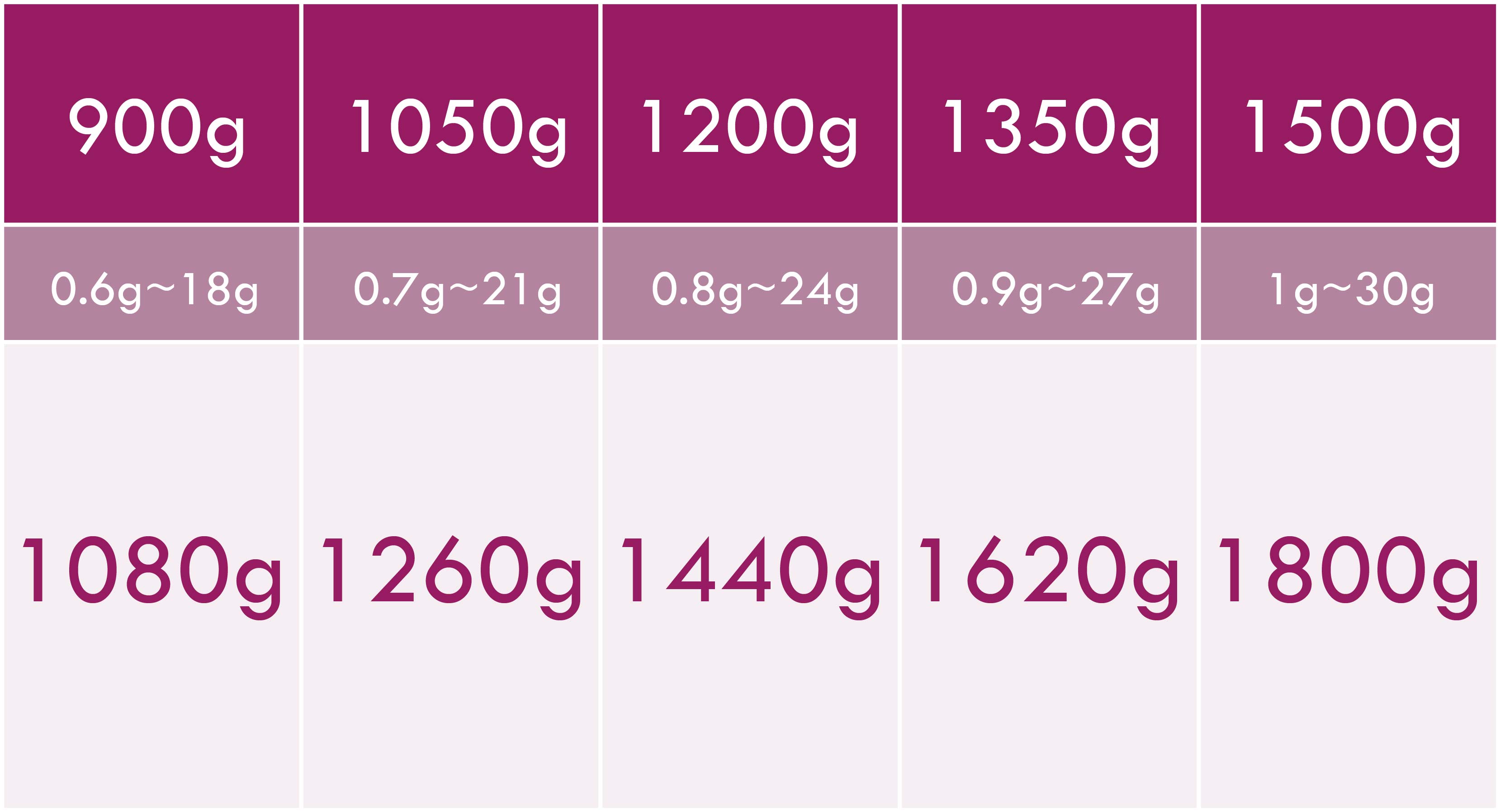
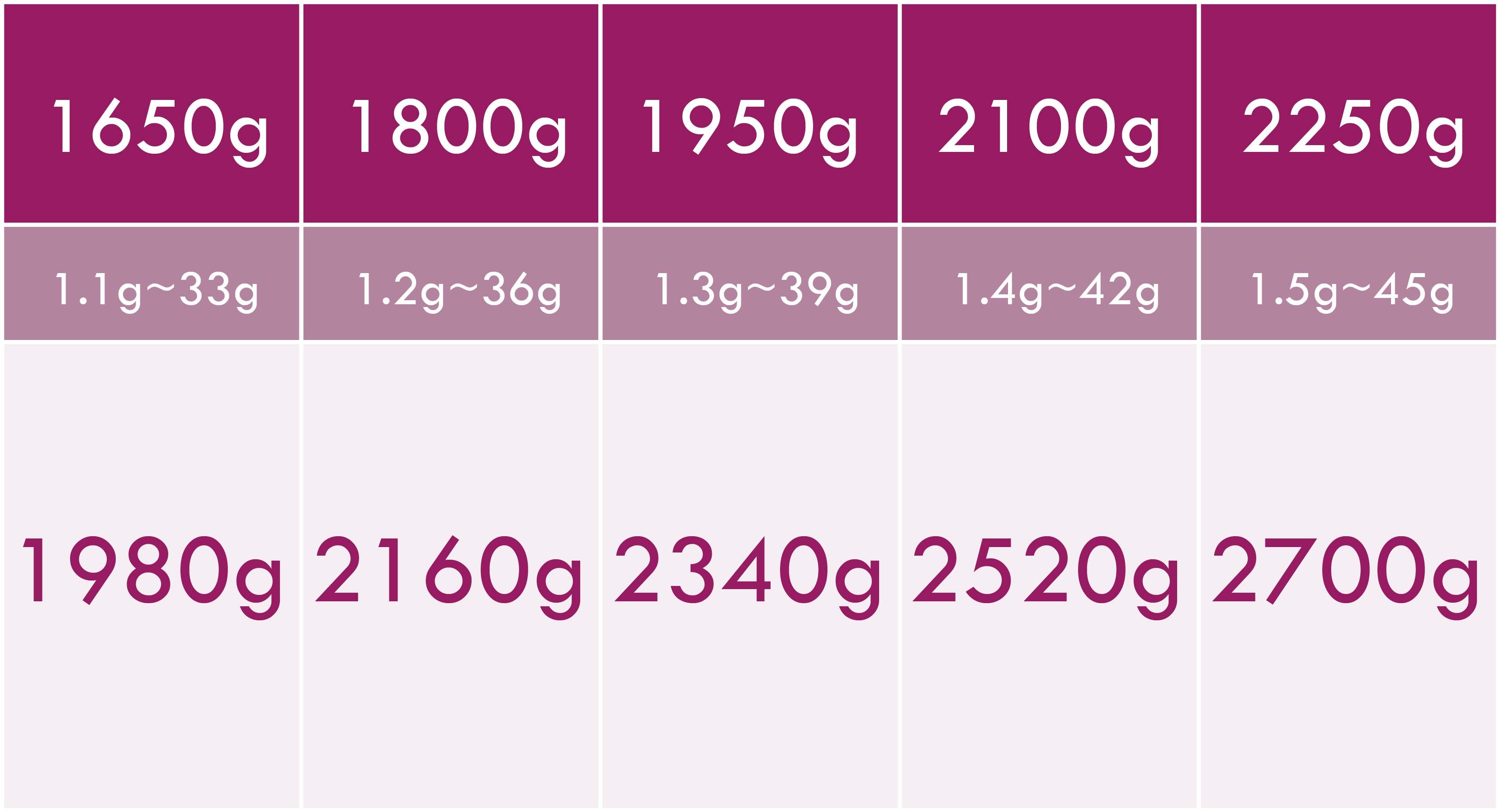
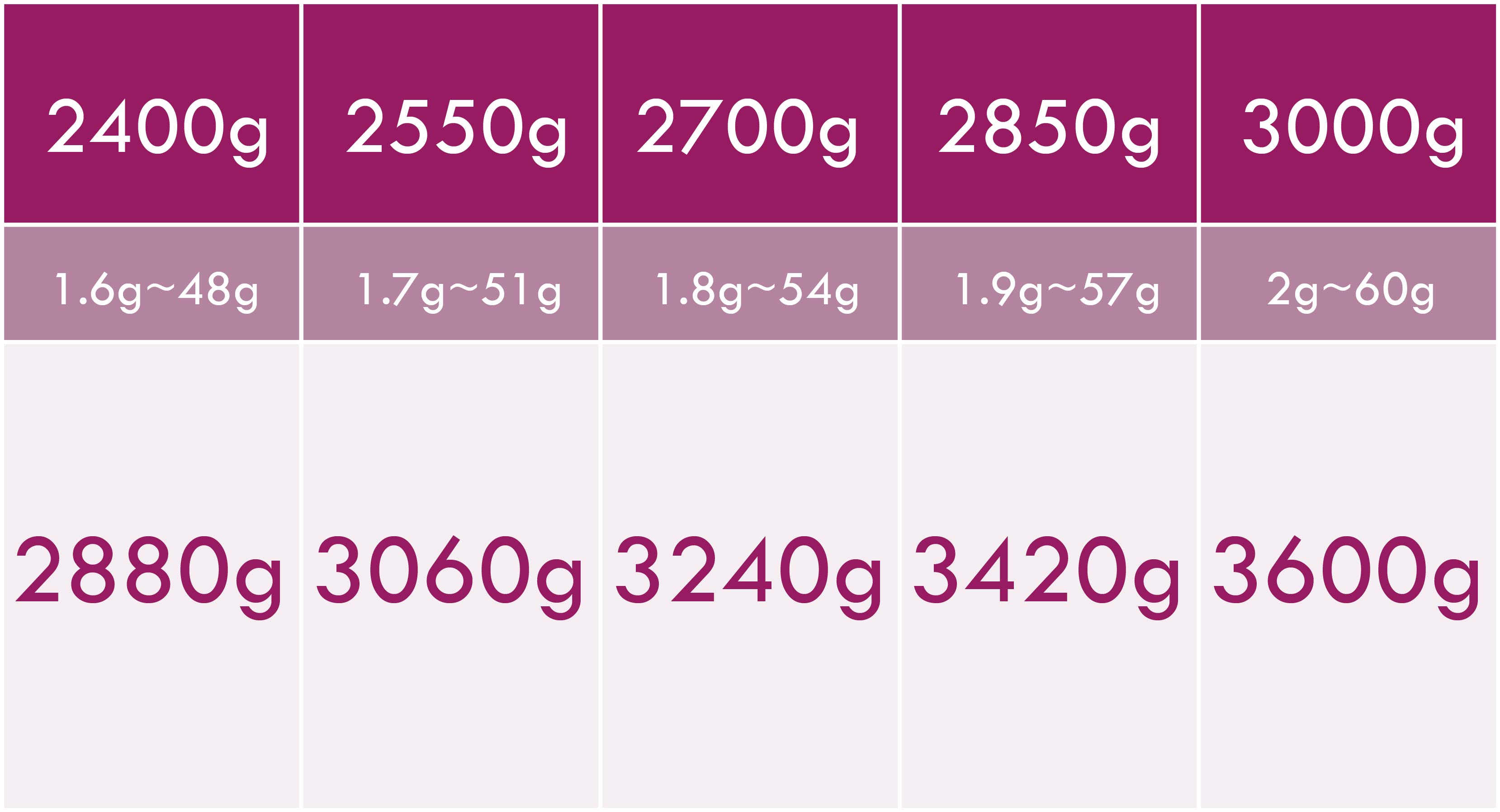
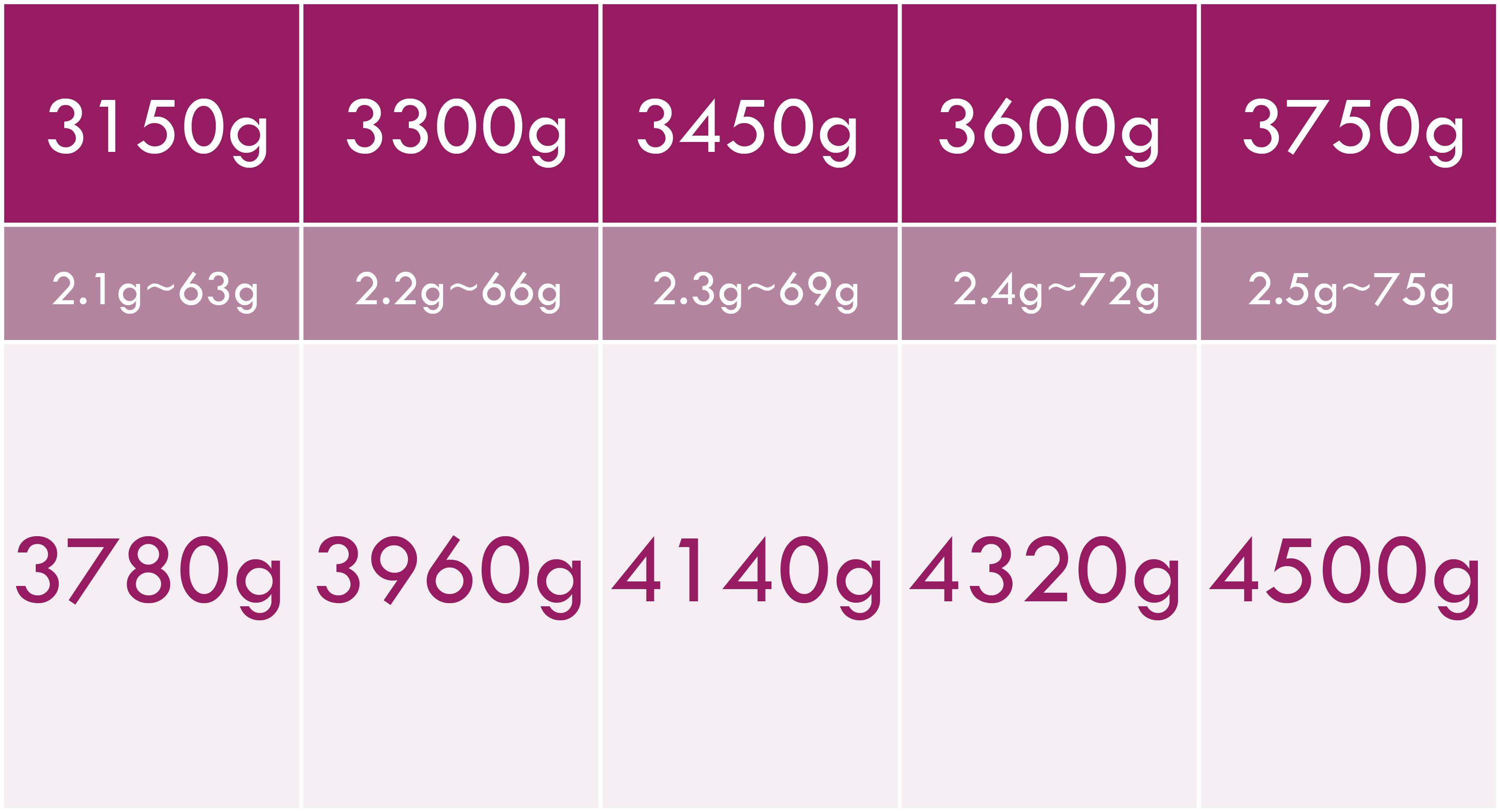
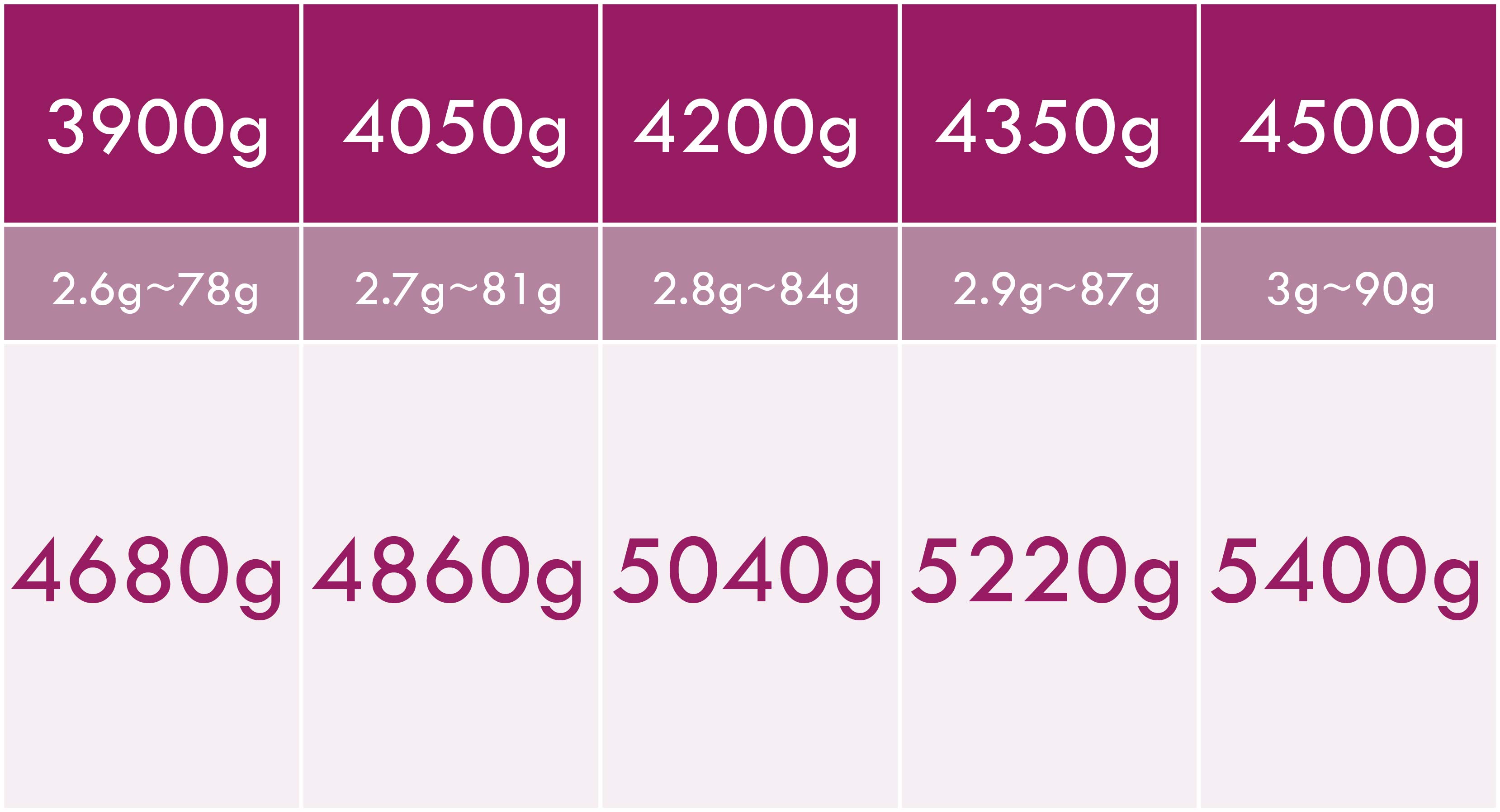
How to Make Barley Koji
In this video, we will explain the steps to making Barley Koji. Barley koji is used as the raw material for making Japanese fermentation food such as barley miso (麦味噌), kinzanji miso, and shoyu. At the sake brewery, barley koji also used to make barley shochu (麦焼酎). This recipe is an instruction from a Japanese koji manufacturer summarized by Kawashima the Japanstore. Please use this as a reference to how to make barley koji.
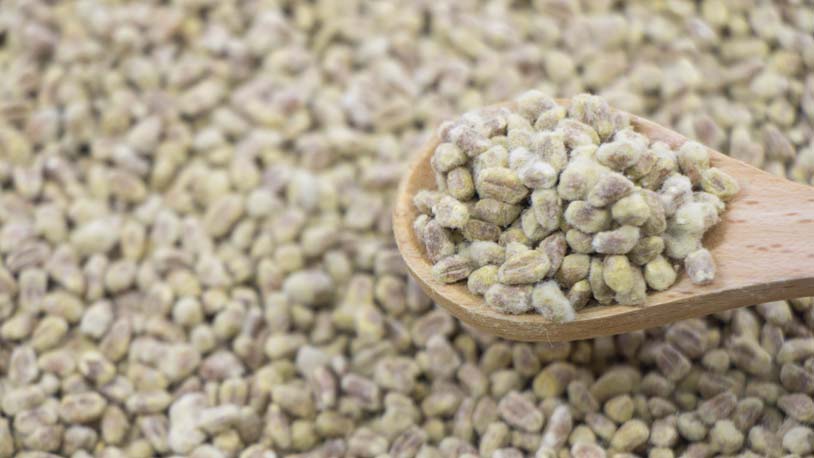
In this article, we will explain how to make barley koji (using koji starter, in this case, Aspergillus oryzae, inoculated on wheat/barley). We hope that you can make nice barley koji!
Other Tools to Use When Making Koji
Choosing the right tools will help you produce successful koji, an ingredient responsible for making Japanese fermented foods like Miso, Amazake, Sake, Shoyu, Mirin, etc. To help you produce successful koji, we provide other tools that you can use along with Koji Tray Size M. Check our recommendation products below:
Polypropylene Cloth for Medium Koji Tray
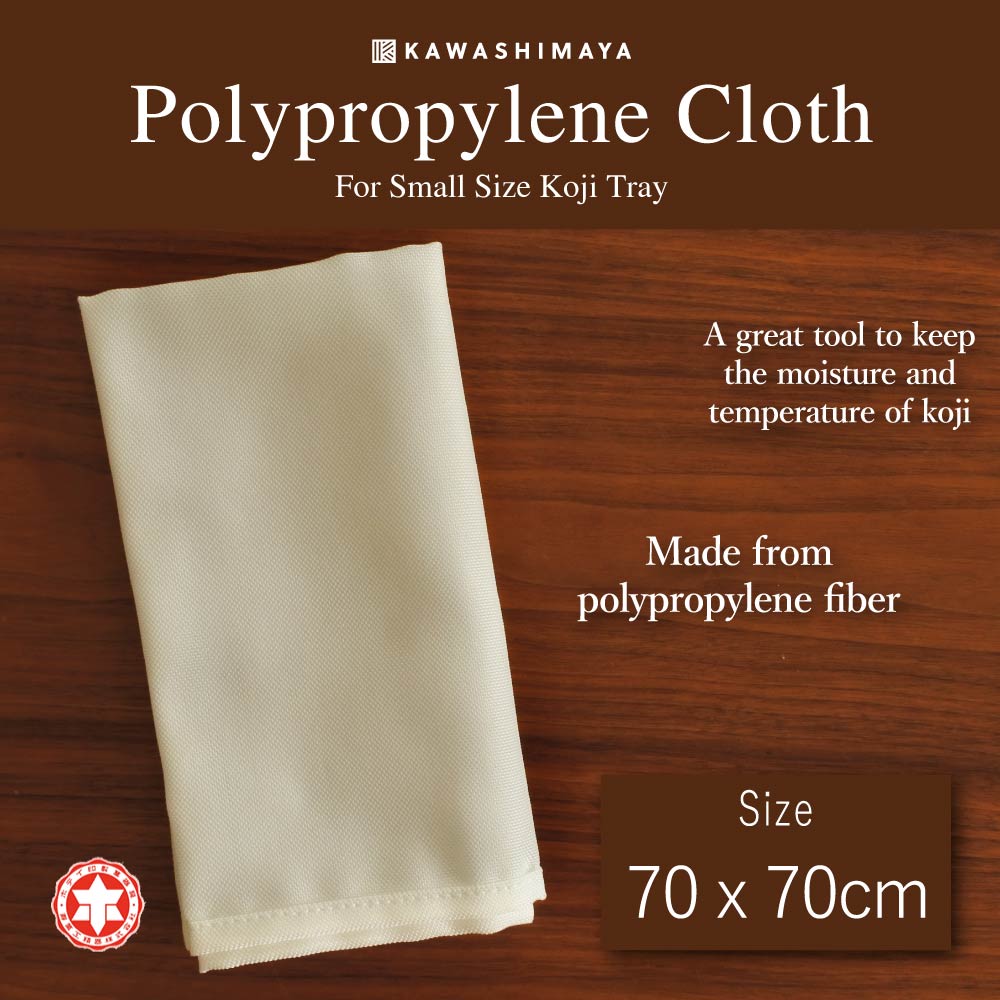
- Click here view product
Make good-quality homemade koji using the cloth favored by koji maker professionals. Mat cloth from Polypropylene fabric prevents the spillage of raw ingredients. It also optimizes the humidity & temperature to keep the koji warm at the right temperature and smoothly finish the fermentation.
Measurement: (70 × 70 cm)
Cotton Cloth for Medium Koji Tray
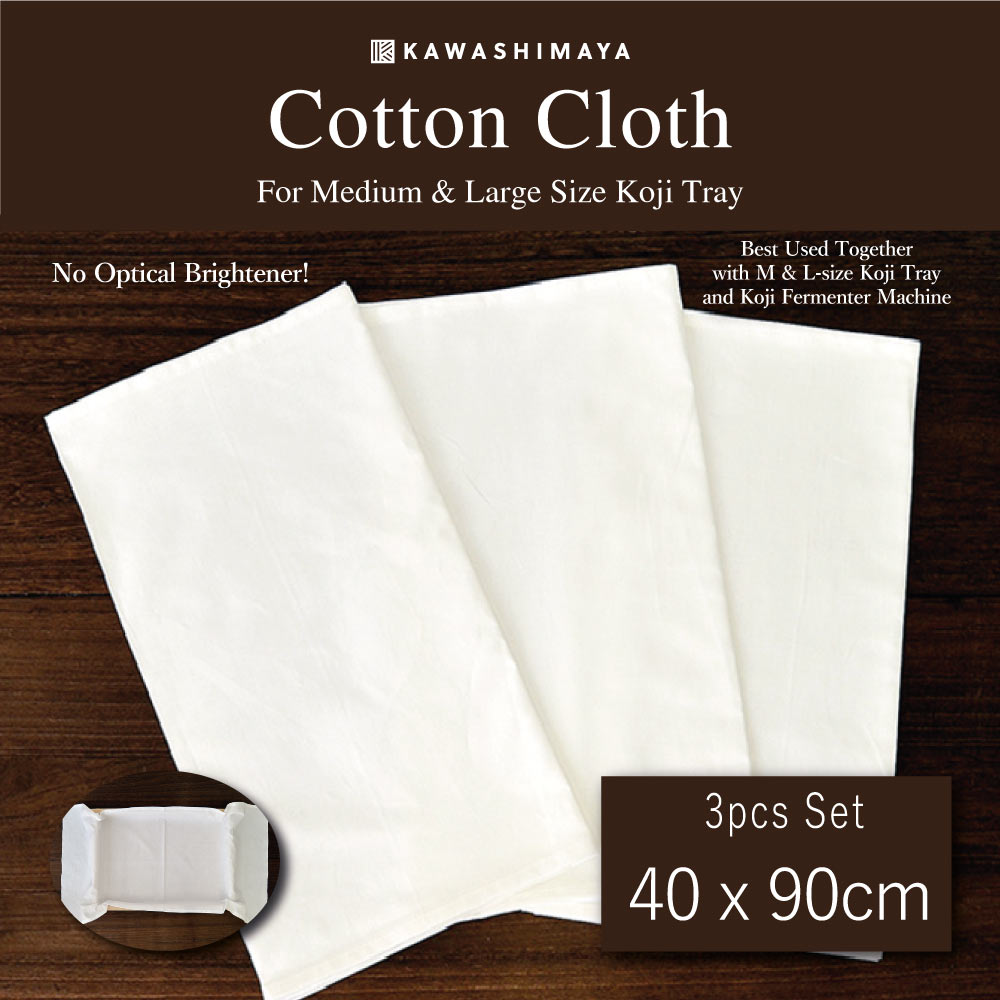
- Click here view product
This bleached cloth is manufactured by Yoshida Textile, a specialty store for food and textile located in Tsubame City, Niigata Prefecture, that was established in 1936. You can use this 100% local Japanese cotton cotton to make koji.
Measurement: (40 × 90 cm)
Customer's Voice
I made a koji tray in my way and failed. Koji tray made by craftsmen are different.
The surface of the wood is so smooth that it feels good, and the wood are firmly fitted. I regret that I should have ordered from the beginning. Thank you for the excellent product. (Wanta, 40s)
I bought it to use it to make koji for miso and amazake.
Since it is made of wood, the temperature doesn't rise too much, and it is straightforward to use because it can keep the moisture moderately, and the quality of the koji was also outstanding.
The size was easy to use for home use as it could be made from 1kg of koji to 3.0kg.
(Really, 50s)
I used to use rice koji and plastic squid, but I think that's the reason why it doesn't work.
I guess that cedar trees are suitable for making koji because of their antibacterial properties and breathability, so it's still different. I will challenge using this. (Fermented Boys, 40s)
Important Notice Before Purchase
● This product is crafted from natural cedar wood, resulting in unique variations in wood grain and color for each koji tray. Please note that specific wood grain patterns cannot be requested.
● Due to the natural characteristics of cedar wood, minor splinters or wood chips may be present. These do not affect the product's functionality. Thank you for your understanding.
| Product Details | |
|---|---|
| Size | 40cm x 31cm x Height 7cm |
| Material | Cedar Wood |

Why shop with KAWASHIMAYA?
- We sell only authentic and high-quality products
- 100% Made in Japan products are as listed
- Organic and non-GMO products are as listed
- All products are new and have long expiry date
- All products are handled directly from our warehouse in Tokyo, Japan
- Easy and secure payment options with CC or PayPal
- Safe and insured international shipping methods
- English and Japanese customer support by email
- Wholesale discount prices available for selected products
- Find insightful articles from KAWASHIMAYA Blog
- Get exclusive discounts for KAWASHIMAYA Newsletter subscribers
- Easy shop on KAWASHIMAYA Amazon USA


